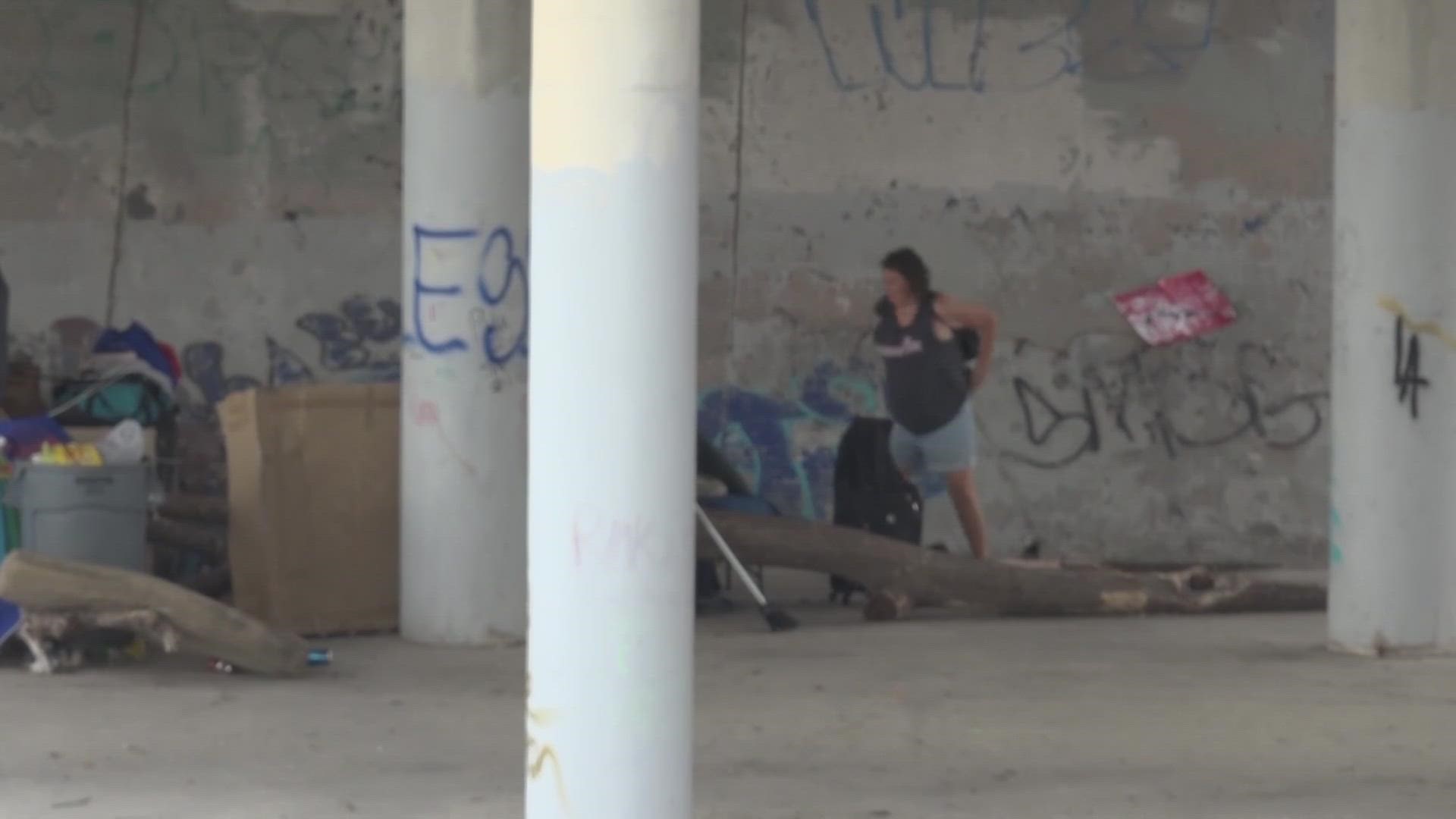SAN ANTONIO — The city’s homeless camp abatement crew arrived at Healy Murphy Park on Nolan Street around 8 a.m. Wednesday.
Their goal: to clean up an area adjacent to a Salvation Army shelter that had become a campground for people who are otherwise without shelter. A large truck with a grappling claw pulled into the middle of the park to remove personal property. Workers in protective suits arrived to remediate any biohazards.
Police officers stood by while residents began dismantling tents and makeshift shelters. The newly displaced filled garbage bags with clothing and filled shopping carts with the small mementos they wanted to keep.
There were wheelchairs and walkers among the crowd, and people rousted out of their sleep who struggled to grab everything they could and go.
While the sweep continued, there was a different kind of rush at a downtown conference center, as advocates for people who are homeless gathered to release the 2023 Point-In-Time (PIT) count of people who struggle to find a safe, permanent roof over their heads.
The South Alamo Regional Alliance for the Homeless (SARAH) organizes the census every year.
The deep dive into data took months to assemble, after workers fanned out across the community January 24, 2023. The report reveals 3,155 people were counted by 72 teams, which they say is a five percent increase from the previous year.
Katie Vela is the Executive Director of SARAH.
“Our focus is on long-term solutions, which is permanent housing options with case management support. We don't have the availability of that resource for everyone that needs it so that's our big focus,” Vela said.
“Pushing people out does not address homelessness. It may address an immediate safety concern for a neighborhood but that is where we need to continue the conversation around what would it take to address this at its core, which is housing with onsite services,” Vela said, commenting on the sweep at the park as advocates gathered to celebrate accomplishments
Vela said sustainable solutions are the only thing that makes sense.
“The housing bond (recently approved by voters) included funding for permanent supportive housing so over the next couple of years we will see about 300 units, but we estimate we need about 1,000 units to address the extent of the needs of people we see who are unsheltered,” Vela said.
Saying that sweeps don’t result in long-term solutions, Vela said it’s hard to wait for appropriate housing resources to be developed.
“We don't need them in ten years. We need them today. We need the right resources and we need community support around the things that work,” Vela said.
Acknowledging that neighbors who feel threatened by the camps have legitimate concerns, Vela said “For people who are worried about what's happening in their neighborhoods, or about the response, I would encourage them to get involved with the homeless service providers and see how they can help because we all are working together on solutions.”
The group summarized eight key findings for 2023.
- There was a small increase in the overall count, which was largely offset by population growth.
- Chronic homelessness for people with a disabling condition decreased 33%.
- Homelessness among Black / African American people was down 1.5%, but still three times the proportional rate.
- The numbers for families with at least one child have jumped over 60% since 2021.
- Children younger than 18 are the highest represented age group in the count at 25%.
- Victims of violence saw an almost 20% increase in homelessness.
- Numbers for unsheltered veterans were down, from 874 to 33.
- In addition to housing, survey participants said they also needed help with food, transportation, ID recovery and healthcare.
More background, resources and ways to help be a part of the solution can be found on the SARAH website.

